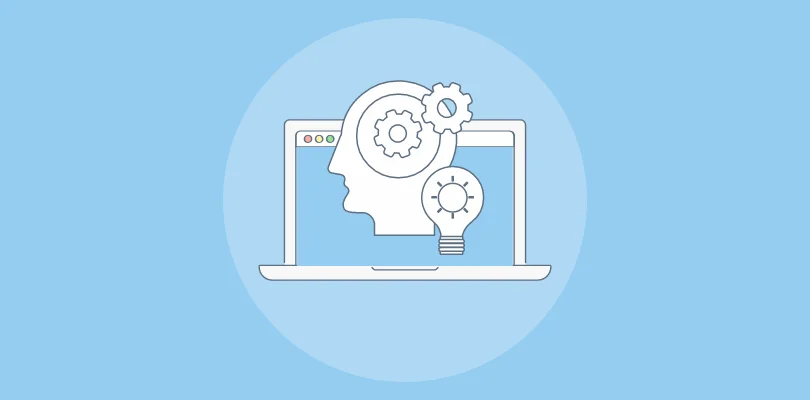Did you know that 70% of HR leaders say department managers are overwhelmed by their responsibilities?
An HR knowledge base can ease this pressure by providing employees with easy access to the information they need—when they need it.
An HR knowledge base centralizes essential documents, company policies, and FAQs in an accessible platform, helping HR teams focus on more strategic initiatives, ultimately boosting productivity and employee satisfaction.
In this blog, we will explore how to create an effective HR knowledge base, its benefits, best practices to follow, and some examples of successful implementations.
What Is an HR Knowledge Base?
An HR Knowledge Base is a centralized repository of information, resources, and documentation to assist employees and HR professionals with human resources-related queries and tasks. This digital library consists of a wide range of content, such as company policies, procedures, FAQs, forms, guides, and training materials.
By consolidating this information in an easily accessible format, an HR Knowledge Base enhances efficiency, improves communication, and ensures consistency across the organization.
For example, in the case of onboarding a new group of employees, a comprehensive knowledge base would include detailed welcome packets with information about the company’s history, mission, vision, and culture.
It would also provide an onboarding checklist, guiding new hires through the tasks they must complete before their first day, such as filling out necessary forms and setting up accounts. It would also house all HR policies, including attendance, dress code, remote work guidelines, and the code of conduct, ensuring that new employees clearly understand what is expected of them.
Why Do HR Teams Need an HR Knowledge Base?
An HR knowledge base provides numerous benefits that enhance efficiency, consistency, and overall employee satisfaction. Here are some key reasons why HR teams need an HR knowledge base software:
Enhanced Efficiency
HR teams receive repetitive employee queries regarding policies, leaves, holidays, procedures, and benefits. An HR knowledge base provides a centralized repository where employees can find answers to all these questions independently.
By having all necessary documents and information in one place, HR processes such as onboarding, performance reviews, and policy updates become more streamlined and less time-consuming.
Consistency in Knowledge
An HR knowledge base ensures all employees access the same, up-to-date information. This uniformity prevents misunderstandings and ensures all staff members are on the same page regarding company policies and procedures.
Centralizing policies and procedures helps ensure that all employees follow the same guidelines, which is crucial for maintaining compliance with legal and regulatory requirements.
Improved Onboarding Experience
New hires can access all the information they need to get started in one place, including welcome packets, training materials, and company policies. This comprehensive approach helps new hires feel more comfortable and informed from day one.
By providing newly joined employees with a clear, step-by-step onboarding process, HR teams can reduce the time it takes to bring them up to speed.
| Related blog: Best Employee Onboarding Software |
Employee Empowerment
Employees can independently find answers to their questions without waiting for HR assistance. This self-service model empowers employees and allows them to resolve issues more quickly.
An HR knowledge base is accessible anytime, enabling employees to find information outside regular business hours, which is particularly beneficial for remote and international teams.
Streamlined Communication
With a centralized platform for all HR-related information, communication becomes more transparent and effective. Employees know exactly where to go to find the information they need.
An HR knowledge base can include mechanisms for employees to provide feedback on the content, allowing HR to continuously improve and update the information based on real user needs.
Advanced Knowledge Retention
An HR knowledge base captures and preserves critical institutional knowledge. This is especially important when experienced employees leave the company, as their understanding remains accessible to current and future staff.
An HR knowledge base supports ongoing employee development and skill-building by documenting training materials and best practices.
Refined Scalability
As companies grow, the demand for HR support increases. An HR knowledge base scales with the organization, ensuring that new and existing employees can access the information they need without overwhelming HR staff.
Whether it’s a new company policy, a change in benefits, or an update in compliance regulations, an HR knowledge base can be quickly updated to reflect the latest information, ensuring that all employees are informed of changes in real time.
How to Structure & Organize Your HR Knowledge Base
HR knowledge base software helps you create a well-structured and organized knowledge base, ensuring employees can quickly find the necessary information.
Here are the key steps to effectively structure and organize your HR knowledge base:
1. Define Clear Categories & Sections
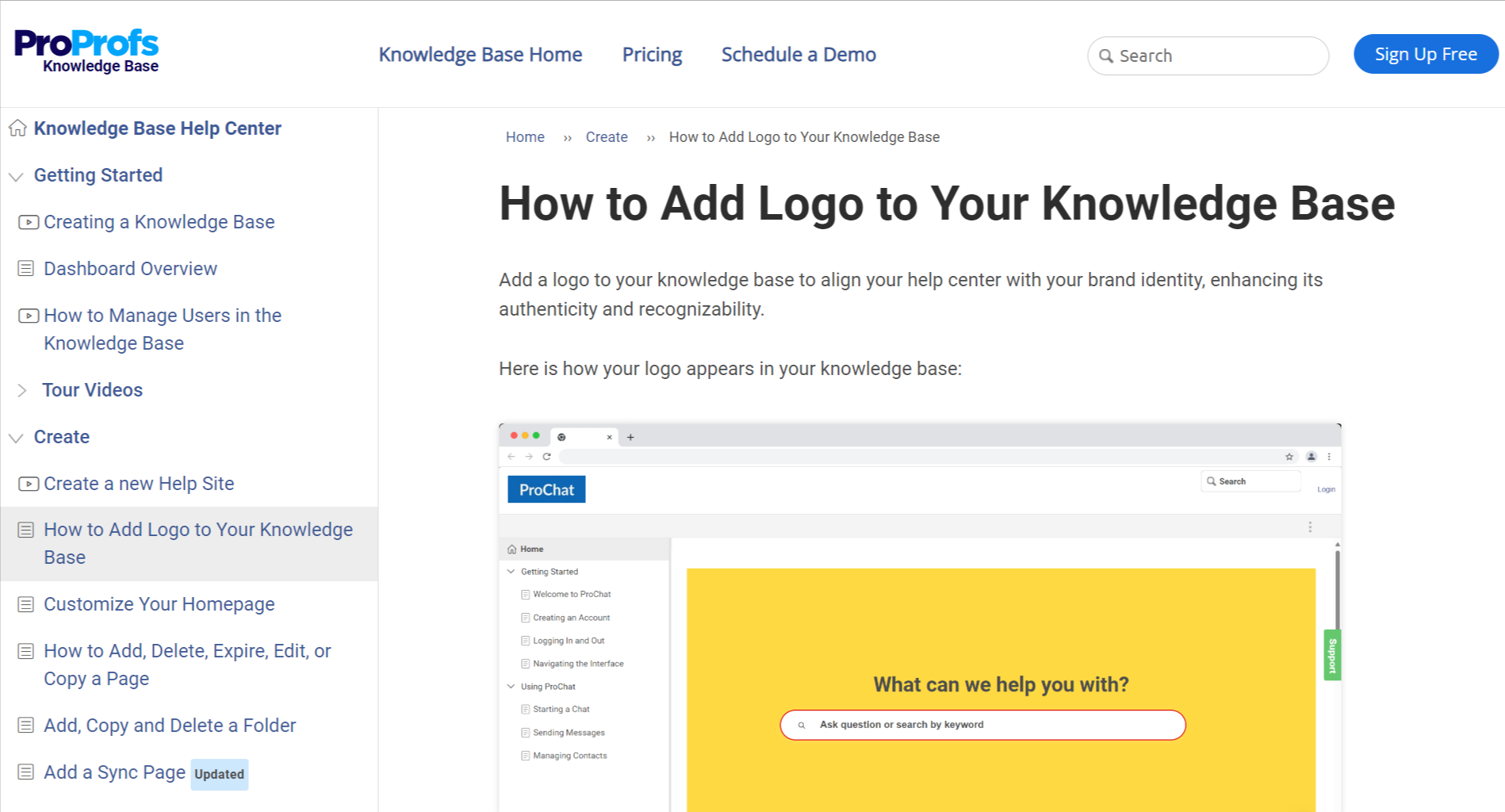
Start by defining broad categories that cover the primary areas of HR. These might include Policies, Procedures, Benefits, Onboarding, Training, Compliance, and Employee Relations.
Within each main category, create subcategories to organize content further. Under Benefits, for example, you might have subcategories for Health Insurance, Retirement Plans, Paid Time Off, and Wellness Programs.
2. Develop an Intuitive Search System
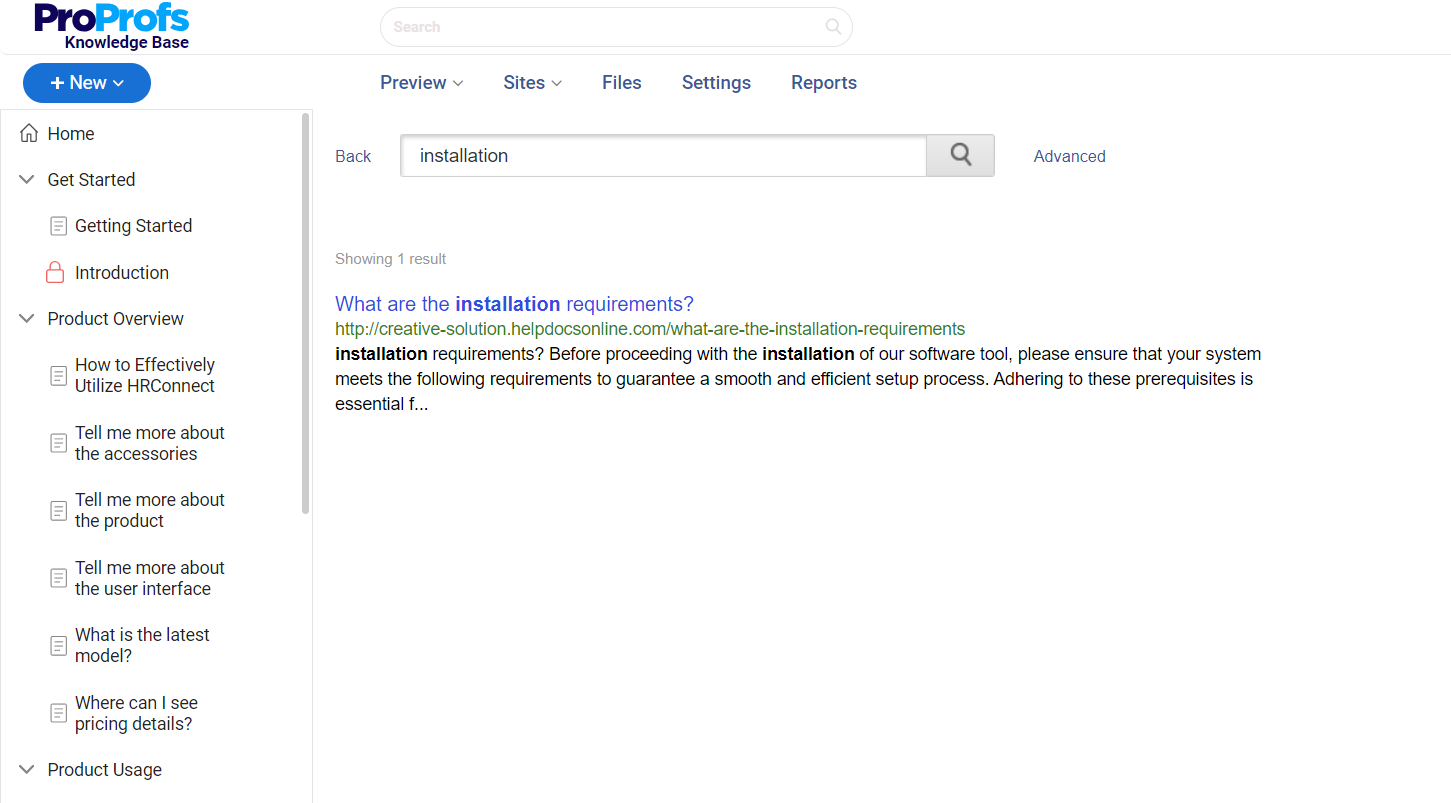
Implement a robust search function that allows users to quickly find specific information by typing keywords or phrases.
Use breadcrumbs and dropdown menus to help users navigate through the knowledge base. This makes it easier to backtrack and explore related topics without losing their place.
3. Create Comprehensive Content for Each Section
Use a consistent format for all documents and articles to enhance readability and professionalism. This includes using headings, subheadings, bullet points, and numbered lists.
Ensure that the content is clear, concise, and free of jargon. Use plain language that is easy for all employees to understand.
4. Include Visual Aids & Multimedia
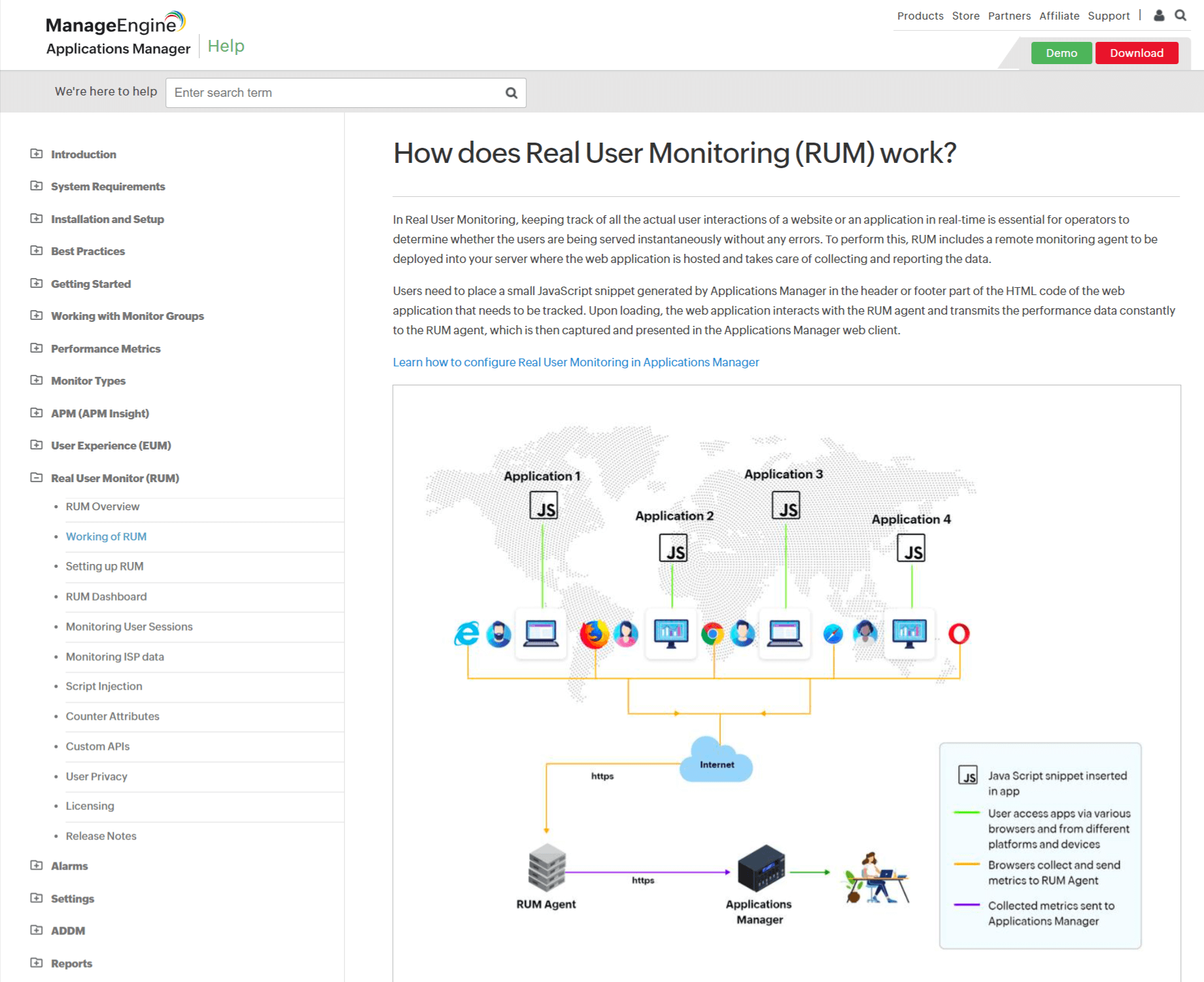
Use images, diagrams, and infographics to illustrate complex concepts and make the information more engaging.
Include video tutorials and recorded training sessions to provide visual and auditory learners with additional resources.
5. Implement Cross-Referencing & Hyperlinks
Use hyperlinks to connect related content within the knowledge base. This allows users to navigate between related articles and sections easily.
Include links to external resources, such as government websites for compliance information or partner sites for benefits details.
6. Ensure Regular Updates & Maintenance
Establish a regular schedule for reviewing and updating the content. This ensures that the information remains accurate and up-to-date.
Use version control to keep track of changes and updates. This allows you to maintain a history of revisions and revert to previous versions if necessary.
7. Encourage Feedback & Continuous Improvement
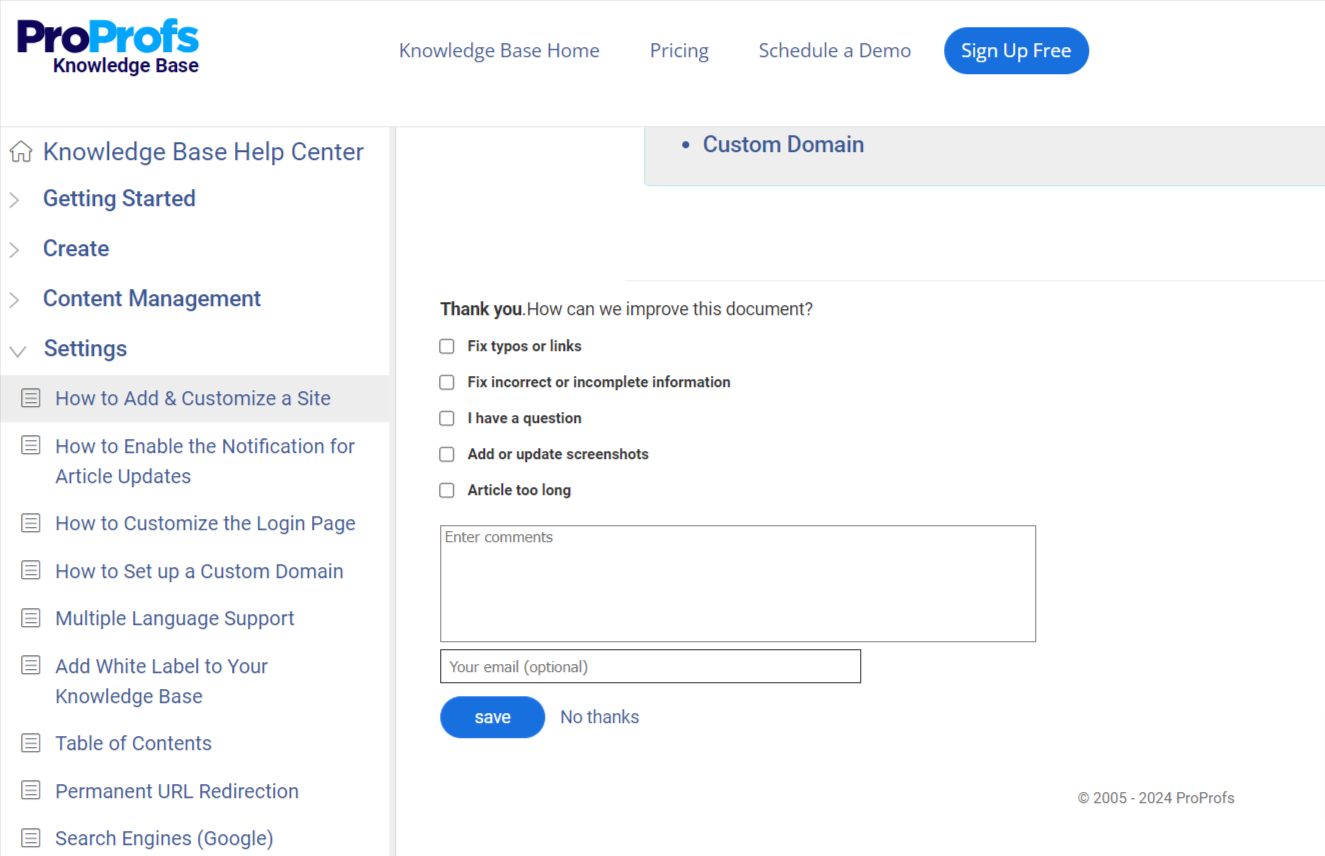
Include a feedback mechanism, such as a rating system or comment section, to gather user input. This helps identify gaps and areas for improvement.
Use analytics tools to monitor usage patterns, search queries, and user behavior. This data can help you understand the most valuable content and where improvements are needed.
What to Look for When Choosing An HR Knowledge Base Software?
Choosing the right knowledge base software ensures your organization can effectively manage and disseminate information. Here are vital factors to consider when selecting knowledge base software:
User-Friendly Interface & Customization
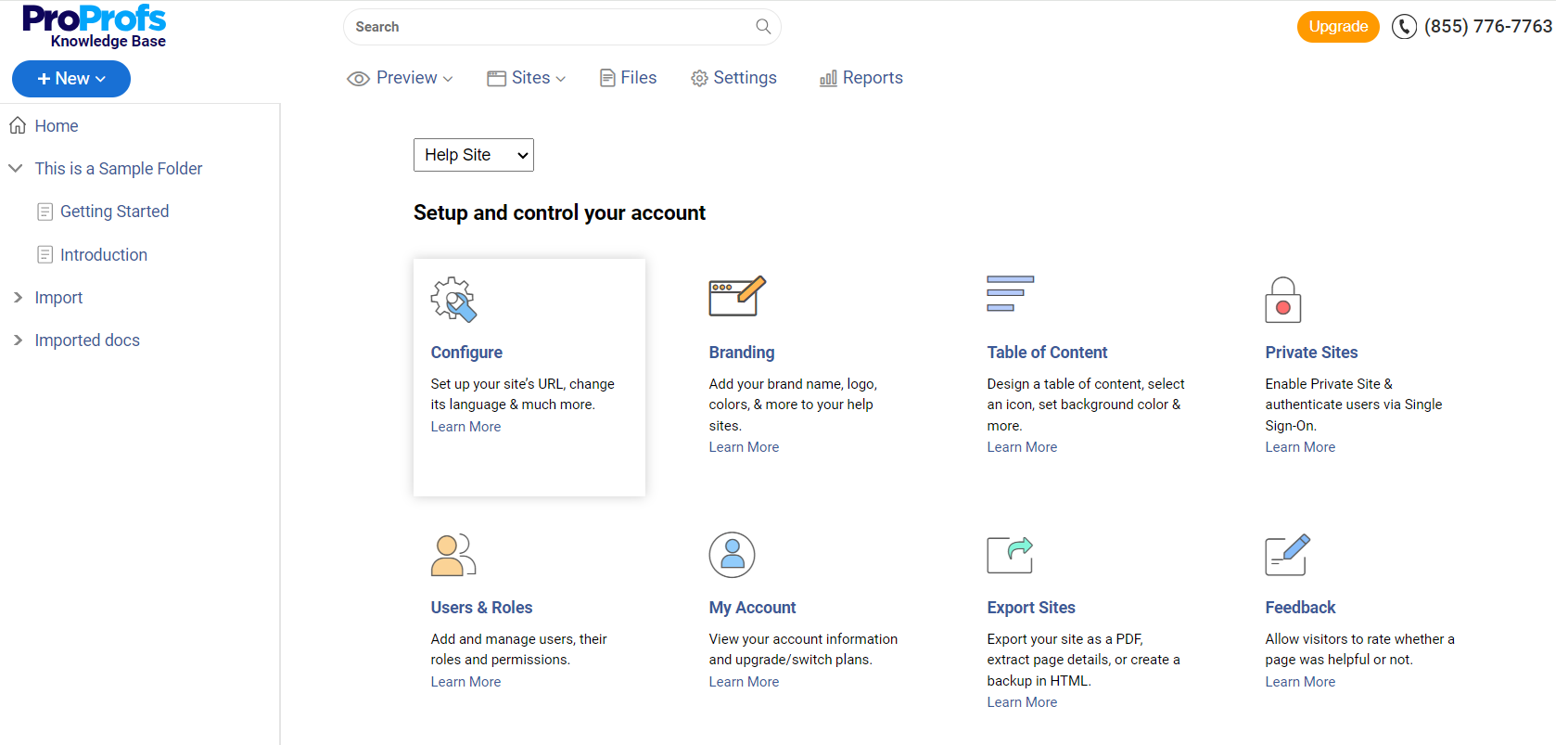
The software should have an intuitive interface requiring minimal training for administrators and end-users.
It should allow you to tailor the interface to match your brand’s look and feel, providing a seamless user experience.
Advanced Search & Content Management Capabilities
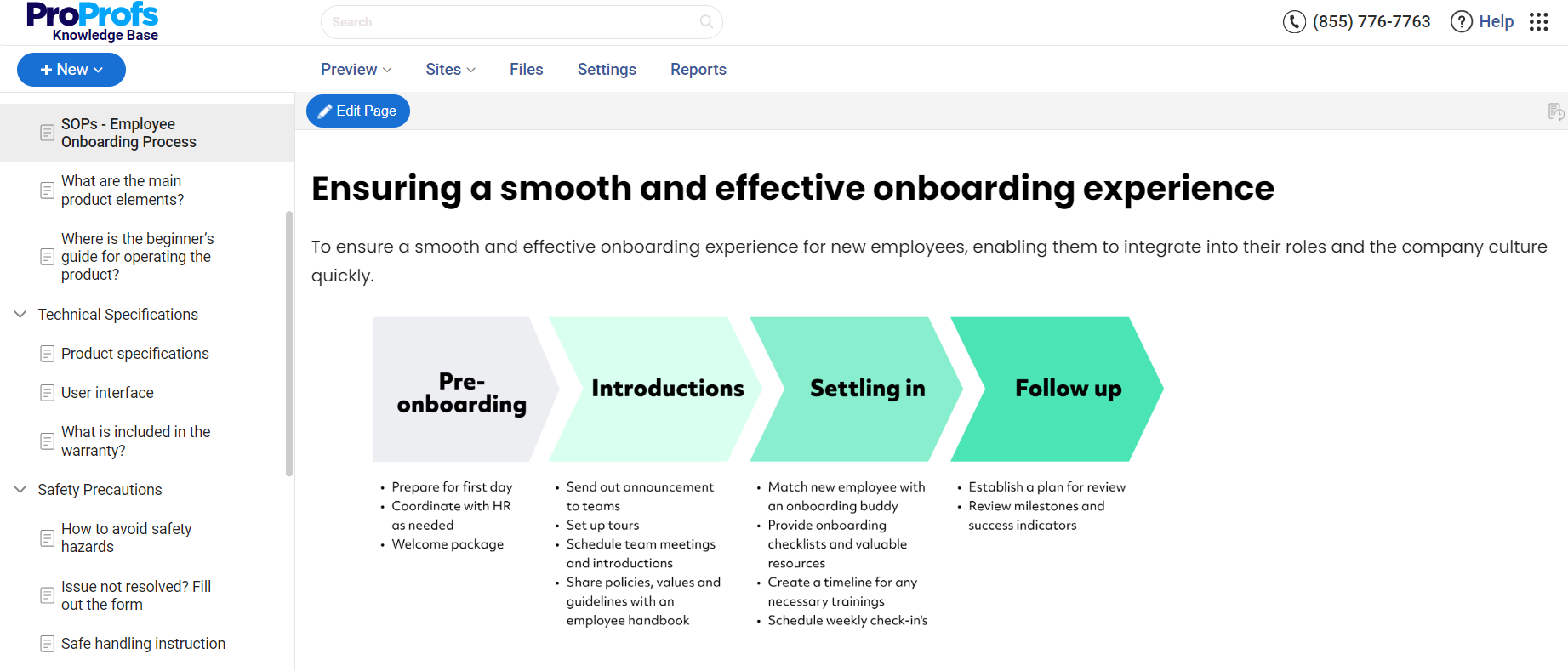
Ensure powerful search functionality, including full-text search, filters, and autocomplete suggestions. Look for version control, collaborative editing tools, and support for various content types, including rich media.
Integrations With Your Favorite Tools
Look for seamless integration with other tools and platforms, such as CRM systems, project management tools, and customer support software.
Integration with existing authentication systems for improved security and ease of access is also crucial.
Accessibility & Mobile Support
The knowledge base should be accessible on various devices, including desktops, tablets, and smartphones. To accommodate users with disabilities, ensure compliance with accessibility standards.
Analytics & Feedback Mechanism
The platform should offer comprehensive analytics to track user interactions, popular content, and areas for improvement.
It should also offer a function for rating articles and providing feedback to improve content quality continuously.
Security & Permissions
The tool should have robust security features, including role-based access controls to manage who can view and edit content. There should also be robust encryption methods to protect sensitive information.
What Are Some HR Knowledge Base Best Practices?
Creating a useful HR knowledge base requires careful planning, quality content creation, and continuous improvement.
Here are some HR knowledge base best practices and tips to ensure your HR knowledge base is effective and valuable to your organization:
Collaborate with Subject Matter Experts (SMEs)
Work closely with HR professionals and other departmental experts to gather accurate and comprehensive information. Schedule regular meetings with SMEs to update and validate the content, ensuring it remains relevant and up-to-date.
Create Clear & Concise Content
Use simple, clear, and concise language to ensure all employees easily understand the content, avoiding jargon and technical terms unless absolutely necessary.
To improve readability, maintain a consistent format for all articles, including using headings, subheadings, bullet points, and numbered lists.
Structure & Organize Content Effectively
Organize content into clear, logical categories and subcategories. For example, main categories like Policies, Procedures, Benefits, Onboarding, and Training.
Ensure content is easily searchable by using relevant keywords, tagging articles appropriately, and including a robust search functionality.
Add Visual & Interactive Elements
Enhance articles with images, diagrams, videos, and infographics to illustrate complex concepts and make the content more engaging.
Incorporate interactive elements like step-by-step guides, checklists, and embedded forms to facilitate better understanding and usability.
Regularly Update & Maintain Content
Establish a regular review schedule to ensure all content is current and accurate. Update or remove outdated information promptly.
Encourage users to provide feedback on articles. Use this feedback to identify areas for improvement and keep the content relevant.
Provide Comprehensive & Detailed Information
Ensure each article covers its topic thoroughly, providing all necessary details and answering common questions.
Include real-world examples and scenarios to help users understand how policies and procedures apply in practical situations.
Improve Accessibility & User Experience
Ensure the knowledge base is accessible on various devices, including desktops, tablets, and smartphones.
Comply with accessibility standards to make the content usable for all employees, including those with disabilities.
Monitor Usage & Performance
Use analytics tools to monitor how employees interact with the knowledge base, which articles are most viewed, and where users may encounter difficulties.
Regularly analyze the data to identify trends and areas for enhancement. Continuously update the content based on user needs and organizational changes.
HR Knowledge Base Examples
Let’s explore some effective implementations of HR knowledge base to see how different companies approach it.
ProProfs Knowledge Base
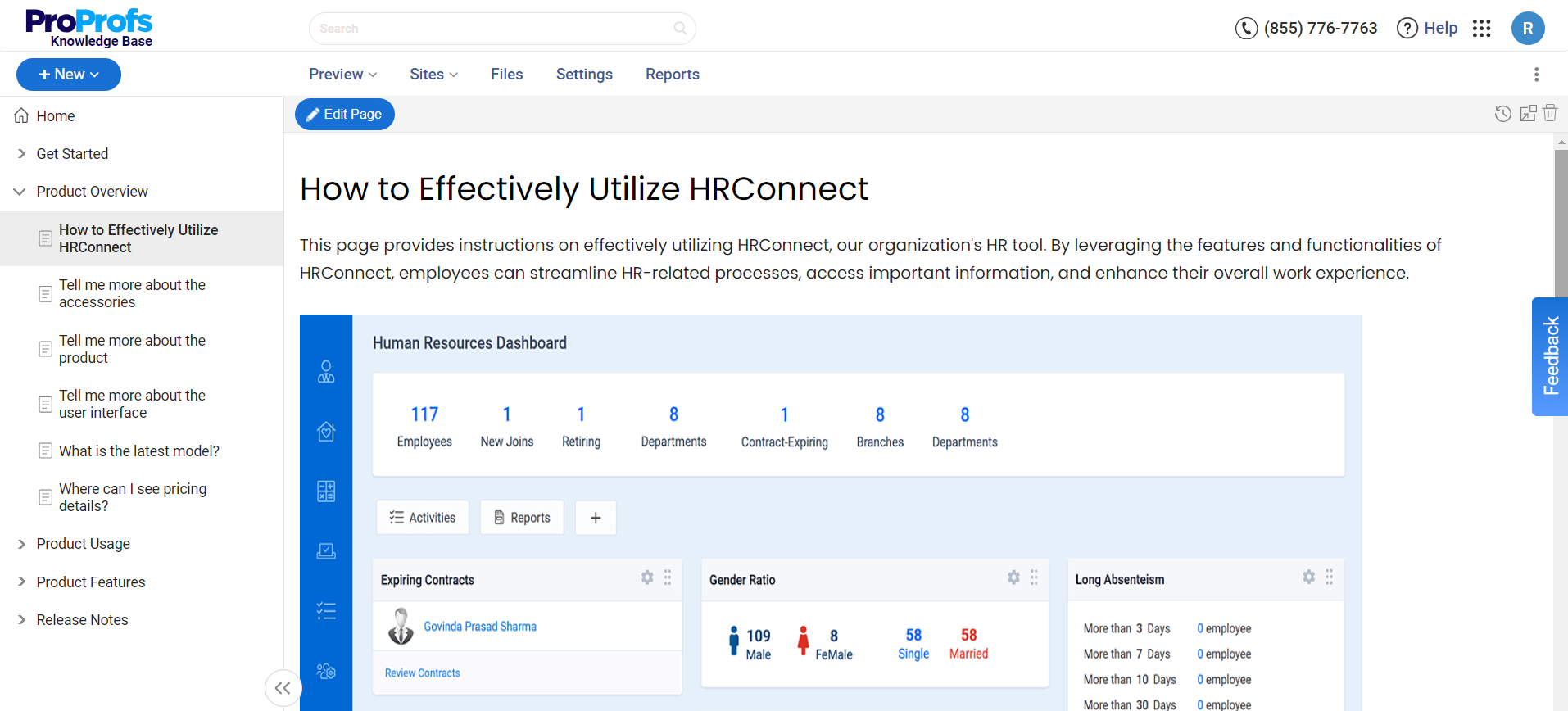
ProProfs’ case is unique. When they wanted to offer a knowledge base to their employees and customers that answered questions proactively, they couldn’t find a truly great product on the market, so they built one.
ProProfs uses its own user-friendly software to power its HR knowledge base. The AI-powered WYSIWYG editor has a Word-like interface and built-in prompts to help writers create fast and error-free HR documents or employee handbooks.
ProProfs’ HR documentation uses an organized Table of Contents, simple, jargon-free language, and smart multimedia like dashboard screenshots, charts, and gifs to make the documents more engaging.
Recently, they’ve introduced AI writer to their knowledge base, making it one of the simplest yet most innovative knowledge base platforms on the web.

Facebook gives all its new employees a handbook that is simple, wise, and gorgeously designed. It uses human-centric design elements and simple, informal language to establish a personal connection with the new employees.
GitLab
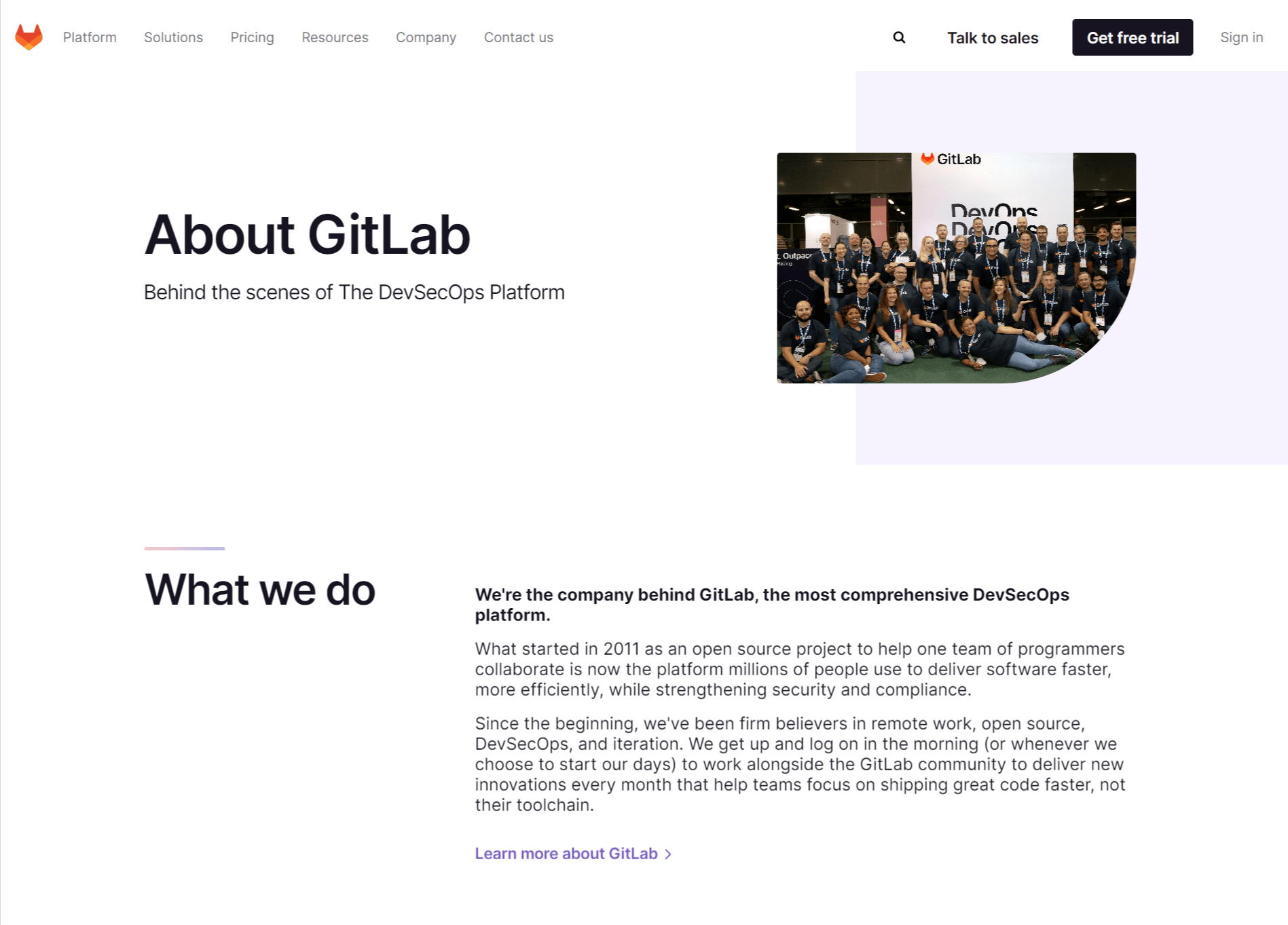
GitLab takes a unique and innovative approach to creating its employee handbook, embracing a “handbook-first” methodology. This ensures that all company information, policies, and procedures are meticulously documented and accessible.
The handbook is an open online living document that reflects the company’s commitment to radical transparency. Contributions from all employees continuously update and maintain it, enabling a culture of inclusivity and collective ownership.
Promote Employee Self-Service with a Comprehensive HR Knowledge Base
Creating a robust HR knowledge base can enhance efficiency, ensure consistency, and improve overall employee satisfaction within your organization. Using the above best practices, like engaging with SMEs, using clear content, and including multimedia, you can build a knowledge base that is a valuable resource for your team.
ProProfs Knowledge Base aids in creating and maintaining an effective HR knowledge base. Its user-friendly interface allows for easy content creation and management, while features like robust search functionality ensure that employees can quickly find the information they need.
It also supports multimedia integration, allowing you to enhance articles with images, videos, and diagrams for better understanding. Get started for free here!
FREE. All Features. FOREVER!
Try our Forever FREE account with all premium features!






